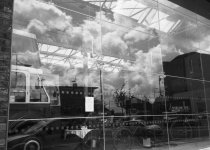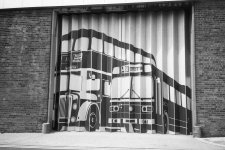I've done my own B&W for over thirty years, but sometimes I've been more intense at it than at others. Lately, though, I've been doing more and more hand processing and printing. Mainly for two reasons, one, as others have mentioned, for the control and quality that only a very specialized (and costly) B&W lab could match. The other is for escape. I love to "get away from it" in my darkroom, there is something that working with my hands and mind to create a tangible result right before my eyes that I just can't seem to get from the digital workflow. Not that I don't like digital for some work, but somehow I don't find it as satisfying. I have a full wet darkroom with a 4X5 enlarger, and space to do up to 16X20 prints, I sometimes wish I could go a bit bigger though.
For film processing I use either XTOL or Rodinal, shooting with PanF, HP5, or Fuji Acros 100, and others from time to time.
A new minilab for film and digital opened up nearby recently, and I sometimes take a roll of 35mm hand processed film B&W in for prints, this saves me the time and money of making proofs myself, as I find 35mm contacts too small to judge from. This has worked successfully, as they haven't wrecked my film (yet) and the prints are not bad. From here I can make bigger and better as I wish.
I should also confess that I was a professional darkroom printer for about thirty years, before almost all pro labs went digital, so I do have the skills.
Now I fly a Mac and a Durst Lambda digital printer system, so I think that is part of my motivation also, going back to doing what I know and still love to do.



